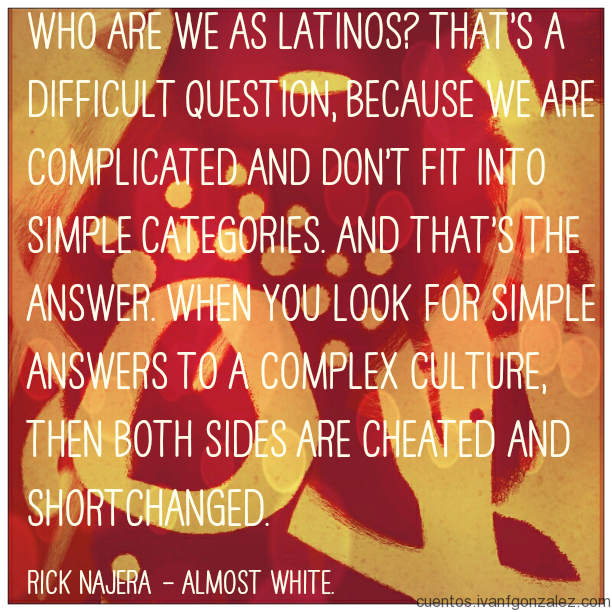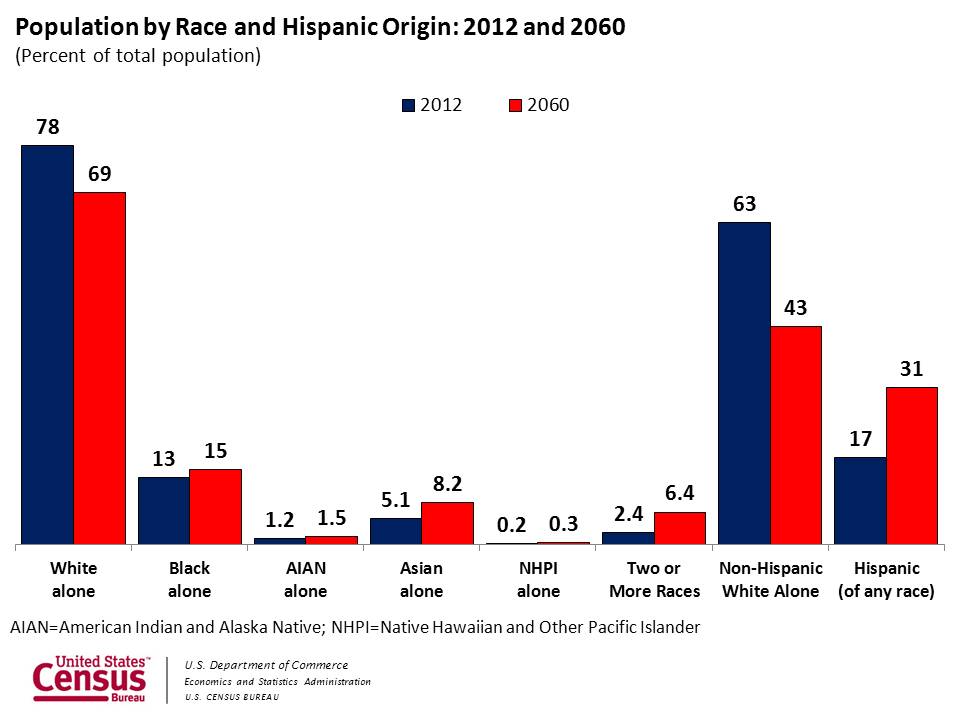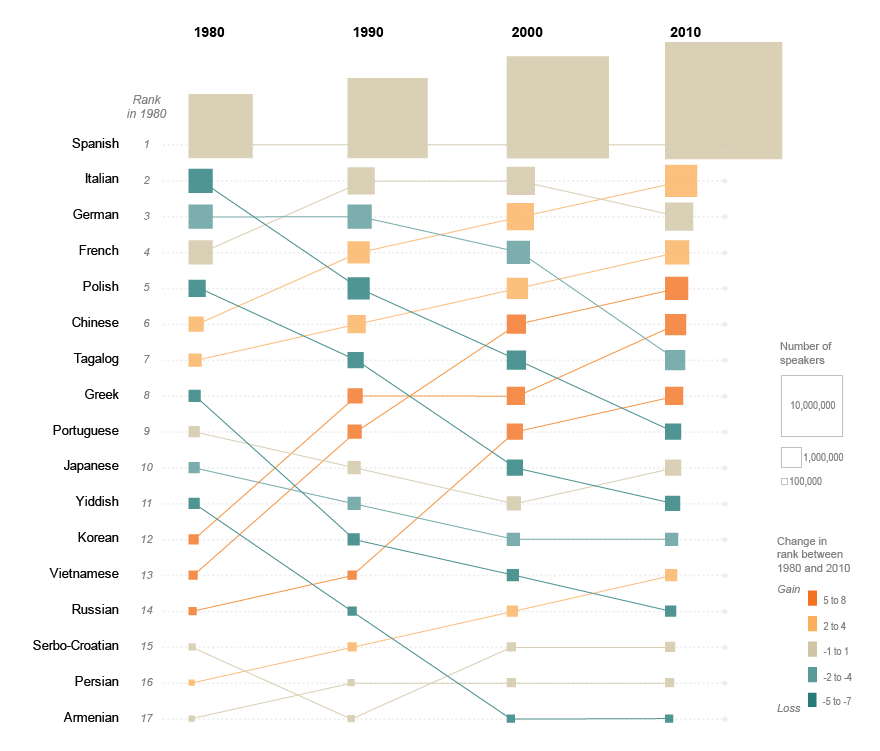NEW: Due to double-scheduling, this talk is now nomadic (room-free). Please contact me if you want to talk about it during TriConf (Maybe Saturday at noon?).
Engage Latinos* in STEM (#LatinoSTEM)
Day/Time: Saturday July 18th, 11:30 am
Track: Community/Issues/Sustainability
Location: Richland Public Library, Room A
Presenter: Ivan Fernando Gonzalez
TriConf 2015 (#TriConf)
- THE PROBLEM:
So far only 4% of our working scientist and engineers are Latinos. Even worst, only 2% of the working scientists and engineers are Latinas.
Stereotypes are very strong, they guide a lot of our actions. We can hardly notice them, but they are always there.
Can you think of a Latino baseball player?
I thought you may.
Can you think of a Latino musician?
Can you think of a Latino farmer?
What about this: Can you think of a Latino scientist?
Stereotypes are killing our future. The fields of STEM (Science, Technology, Engineering, and Math) badly need the input of talented, diverse people. So far only 4% of our working scientist and engineers are Latinos. Even worst, only 2% of the working scientists and engineers are Latinas. Lack of diversity represents a loss of talent. This loss of talent is not due to lack of Hispanic talent or skills, this is due to expectations (personal and social), limited access to resources, and an economy that no longer promotes social mobility facilitated by affordable education.
We need to do better. By 2050 a third of our nation’s population will be Hispanic. Are we ready to face a future with an ever smaller base of STEM workers? Human talent is the one resource we can’t waste.
- LATINO ENGAGEMENT:
Some structural issues may not change any time soon, but there is one thing we can do now to effect change here in the Try-Cities. We can engage Latinos in STEM.
Engaging Latinos in STEM means to listen to what is important to others (your Latino audience), to find Latino role models that can destroy toxic stereotypes, and to establish a robust communication that allows permanent access to resources.
What is important for Latinos?

What is important to you? It may or it may not be the same as what is important to the people who you want to engage. If I tell you that I know what is important for Latinos, I will be oversimplifying and probably lying to you. We Latinos are not monolithic. We are as diverse as you can be. Maybe the Spanish language, some shared cultural traditions, and the strong family connections are somewhere at the backbone of what “Latino” means for a lot of people. But for sure it doesn’t describe all the people in this ethnic group, maybe not even describe most of us. Always ask, don’t assume you know what are the other people’s interests and needs.
About expectations.
Bringing Latino STEM workers to Latino communities and schools may be one of the single most important action to destroy stereotypes and change Latino expectations.
There are no expectations for a Latino kid to become a scientist or an engineer. Sometimes this lack of expectation is because there is no clarity about what STEM professionals do. Sometimes it is because the perception of STEM jobs as something only super-smart white men do. That needs to change.
You can try to teach science at school, but we also need to engage the family and the community to succeed in recruiting more Latino talent. In an article for NBC news, Andrés Henríquez, board member of Excelencia in Education and former program officer at the National Science Foundation, said one of the reasons why Latinos often don’t pursue careers in STEM is because they don’t have a clear idea of what a job in STEM looks like—and neither do their parents.
“We know what a teacher is because we’ve gone through the K-12 system. We know what a doctor is because we have to go visit a doctor occasionally,” said Henríquez said. “But when we try to picture a scientist or an engineer, it’s very hard to think about what that looks like. That needs to be better communicated and defined.” (link to article)
Bringing Latino STEM workers to Latino communities and schools may be one of the single most important action to destroy stereotypes and change Latino expectations. To be able to imagine yourself as a scientists it is much easier if you can see a scientist that looks like you and speaks like you. But there are other ways to make that personal connection, and engagement requires mostly an interest and appreciation for what Latinos have to say, and how the amazing world of STEM is just waiting to hear what they have to say, and what wonderful new future they can help to build.
And remember, it takes a village…
Panelists at the 2015 U.S. News STEM Solutions conference shared how they created relationships with parents to help children succeed in STEM
Programs that reach out specifically to families can be effective, panelists said, whether they are provided in bilingual settings or through partnerships with community nonprofits, civil rights groups, churches or schools.
Adults from low-income communities and underrepresented groups often do not understand how to help their children succeed in STEM learning, and panelists stressed the importance of learning with their children instead of pretending they have all the answers or not showing interest. ” Let caregivers know they don’t need to have an advanced degree in science or math to contribute to their children’s education,” Rice says. “Meet people where they are.” (link to news article).
- RESOURCES:
|
A BRIEF LIST FOR ENGAGING LATINOS IN STEM
|
(*) I use Latinos and Hispanics as if they are interchangeable words. They are not.
Additional material (work on progress)
Latinos are 17% of the US population but they are less than 7% of the Science and Engineering workers. |
 |
  |
|
|
|
|
Additional links:
- NSF’s 2015 biennial report Women, Minorities, and Persons with Disabilities in Science and Engineering http://www.nsf.gov/statistics/2015/nsf15311/start.cfm
- Diversity in STEM: What It Is and Why It Matters http://blogs.scientificamerican.com/voices/diversity-in-stem-what-it-is-and-why-it-matters/
- Groups of diverse problem solvers can outperform groups of high-ability problem solvers http://www.ncbi.nlm.nih.gov/pmc/articles/PMC528939/
- More Latinos With STEM Degrees Needed, Here Are Top Schools Doing It (by GRISELDA NEVAREZ , JUN 17 2015) http://www.nbcnews.com/news/latino/more-latino-stem-degrees-needed-here-are-top-schools-doing-n376961
- Engaging Parents in Kids’ STEM Education http://www.usnews.com/news/stem-solutions/articles/2015/06/29/engaging-parents-in-kids-stem-education
- Statistical Portrait of Hispanics in the United States, 1980 – 2013 (BY RENEE STEPLER AND ANNA BROWN) http://www.pewhispanic.org/2015/05/12/statistical-portrait-of-hispanics-in-the-united-states-2013-key-charts/
- Pulling Back the Curtain: Uncovering and Changing Students’ Perceptions of Scientists (link)
- VIMS grad students help kids expand perception of scientists http://www.vims.edu/newsandevents/topstories/archives/2010/draw_a_scientist.php
- Excelencia in Education reveals the Top 25 colleges producing Latino graduates in science, technology, engineering, and math fields in 2012-13. Press release: http://www.edexcelencia.org/media/press-releases/finding-your-workforce-stem
- Latino STEM Alliance https://www.facebook.com/LatinoSTEMAlliance
- José Hernández: A Smart Investment in STEM Education http://blog.stemconnector.org/jos%C3%A9-hern%C3%A1ndez-smart-investment-stem-education
- NEA: Tapping the STEM Potential of Latinos http://neatoday.org/2012/10/23/tapping-the-stem-potential-of-latinos-2/
- Supporting Diversity in Science through Social Networking http://journals.plos.org/plosbiology/article?id=10.1371/journal.pbio.1001740
- Ciencia Puerto Rico http://www.cienciapr.org/
- NPR’s Latino USA in STEM sisters: http://latinousa.org/2013/09/06/stem-sisters/
- Cultural Connections with STEM Outreach https://joseggonzalez.wordpress.com/2013/07/28/cultural-connections-with-stem-outreach/
- Who’s the Scientist? Seventh graders describe scientists before and after a visit to Fermilab. http://ed.fnal.gov/projects/scientists/pat.html
- Promoting STEM en Español to 3rd Graders http://www.fuentek.com/blog/2010/11/promoting-stem-en-espanol-to-3rd/
- Engaging Latino Parents in #STEM Education@Moefeliu shares a link, @alalejandro takes it from there. https://storify.com/gonzalezivanf/engaging-latino-parents-in-stem-education









